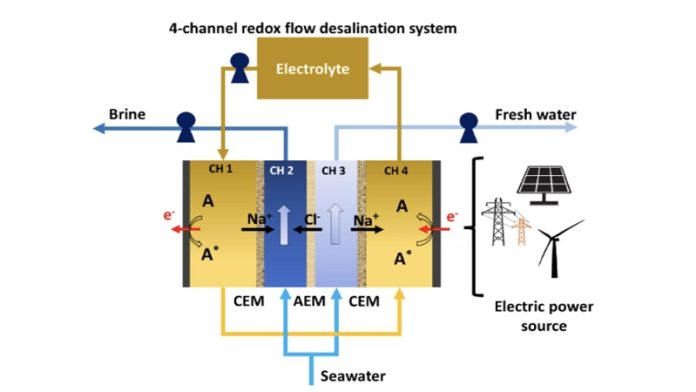
Scientists have made an exciting breakthrough in a technology called redox flow desalination (RFD), which can turn seawater into drinkable water while also storing energy from renewable sources like the sun and wind.
This discovery, detailed in a study published in Cell Reports Physical Science, could be a game-changer in addressing the global water shortage and helping the environment.
The researchers, including a team from New York University Tandon School of Engineering, have improved the RFD system, making it 20% more effective at removing salt from seawater and requiring less energy to do so.
They achieved this by fine-tuning how fast the water and solutions flow through the system.
RFD technology is promising because it is scalable, which means it can be adjusted to meet different needs, and flexible, allowing it to use renewable energy efficiently.
André Taylor, a leading professor in this research, emphasizes that their goal is to provide a sustainable solution that not only supplies fresh water but also supports renewable energy and environmental conservation.
The way RFD works is quite ingenious. It splits incoming seawater into two paths: one that gets desalted and another that ends up with the removed salt.
Additionally, it uses special batteries to store energy, which is perfect for using solar or wind power that isn’t constant throughout the day. This stored energy can then be used when there’s a high demand for electricity, making the whole process more reliable and eco-friendly.
The system uses a setup of membranes to separate the seawater into the fresh and salty streams. When electricity is applied, it moves sodium ions (from the salt) across these membranes, pulling the salt out of the water and leaving behind fresh water that’s safe to drink.
One of the researchers, Stephen Akwei Maclean, explains that they can adjust how long the seawater stays in the system to ensure it becomes potable. This means they can operate the RFD system in different modes, depending on the need for fresh water or energy storage.
Interestingly, this technology can also do the reverse process, mixing the separated salt and water back together to generate electricity. This dual function makes RFD not just a way to desalinate seawater but also a kind of battery that can store and supply renewable energy.
This breakthrough is especially important as the world faces increasing water shortages due to climate change and population growth.
The improved RFD process offers a more cost-effective and environmentally friendly way to produce fresh water and store energy, highlighting a significant step forward in tackling these global challenges.
The research involved collaboration between NYU and Shanghai Jiao Tong University in China, showing the international effort to find solutions to some of the world’s most pressing problems.
With further development, this technology could provide a reliable source of fresh water and clean energy to regions in need, marking a critical advancement in sustainable living and environmental protection.
Source: NYU.



